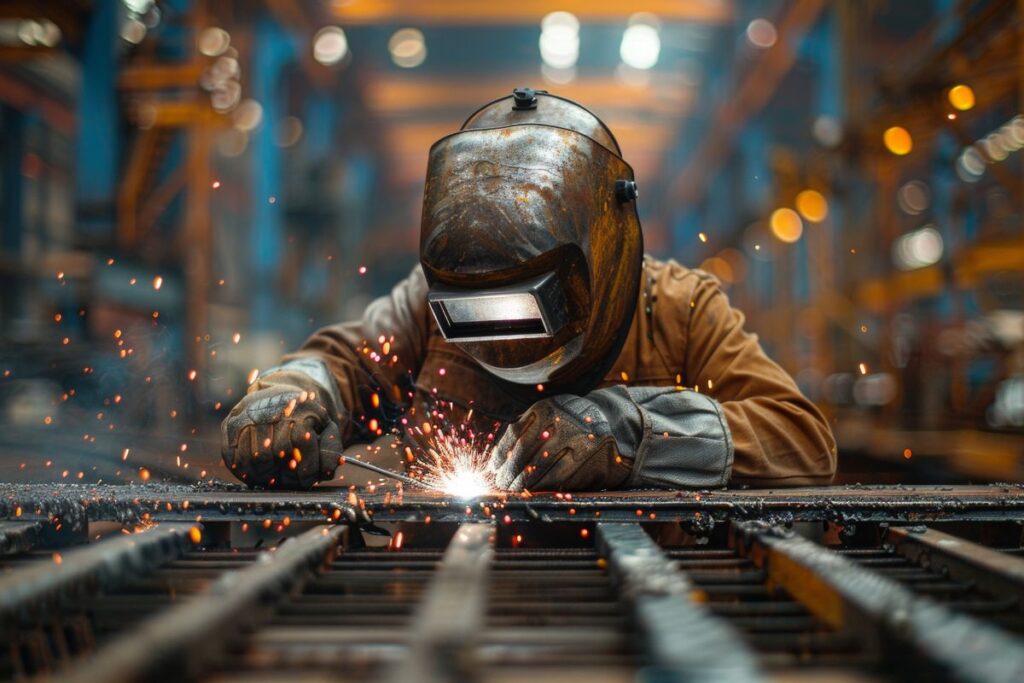
Welding, a craft that transforms molten metal into intricate structures, also presents significant health and safety challenges. Among the most critical concerns are the harmful fumes and hazards generated during the welding process. In this blog, we go into the indispensable role of proper ventilation and the crucial importance of safeguarding yourself from these potential threats.
Welding produces a complex mixture of gases and particles, including metal oxides, ozone, and other potentially toxic substances. These fumes, if inhaled, can lead to a range of respiratory issues, from irritation to chronic diseases. Proper ventilation is the cornerstone of a safe welding environment. By effectively removing contaminants from the air, it can significantly reduce the risk of exposure.
Beyond safeguarding respiratory health, proper ventilation also contributes to fire prevention. By dispersing flammable gases, it minimises the risk of explosions and fires. Moreover, a well-ventilated workspace enhances overall comfort and productivity.
While ventilation is essential, it’s equally crucial to protect yourself with appropriate personal protective equipment (PPE). This gear forms a crucial barrier between you and potential hazards.
This is your primary defence against intense light, ultraviolet radiation, and flying sparks. Ensure your helmet’s auto-darkening filter is in good condition and provides adequate protection.
The type of respirator depends on the specific hazards present. For occasional light welding, an air-purifying respirator may suffice. However, for prolonged or heavy-duty welding, powered air-purifying respirators (PAPRs) or supplied air respirators offer superior protection.
Wear fire-resistant clothing made from materials like leather or Nomex. This clothing shields your body from heat, sparks, and molten metal splatter.
Leather gloves provide excellent protection for your hands, while sturdy, fire-resistant boots safeguard your feet.
Different welding processes generate varying types of fumes. For example, welding on stainless steel releases chromium and nickel fumes, which can cause respiratory allergies and lung damage. Welding on galvanized metal produces zinc oxide fumes, which can lead to metal fume fever. Understanding the specific hazards associated with your welding tasks is crucial for selecting the appropriate protective measures.
Exposure to welding fumes can have severe health consequences. Short-term effects include metal fume fever, characterised by flu-like symptoms. Long-term exposure can lead to respiratory diseases such as chronic bronchitis, emphysema, and lung cancer. Additionally, certain welding fumes can cause metal poisoning and other systemic health issues.
By prioritising ventilation, using appropriate PPE, and following safety guidelines you can significantly reduce your risk of exposure to welding hazards. Remember, welding is a skilled trade that demands respect for safety. By taking proactive steps to protect yourself, you can enjoy a long and healthy career in the rewarding field.
Welding is a skilled trade that offers exciting opportunities. By understanding the importance of safety and mastering welding techniques, you can build a successful career in this in-demand field.
If you’re passionate about working with your hands and creating something tangible, consider a career in welding. The Welding Academy provides comprehensive training to equip you with the skills and knowledge needed to excel in this industry.
Ready to take the next step? Contact us today to learn more about our welding programs and how we can help you achieve your career goals.